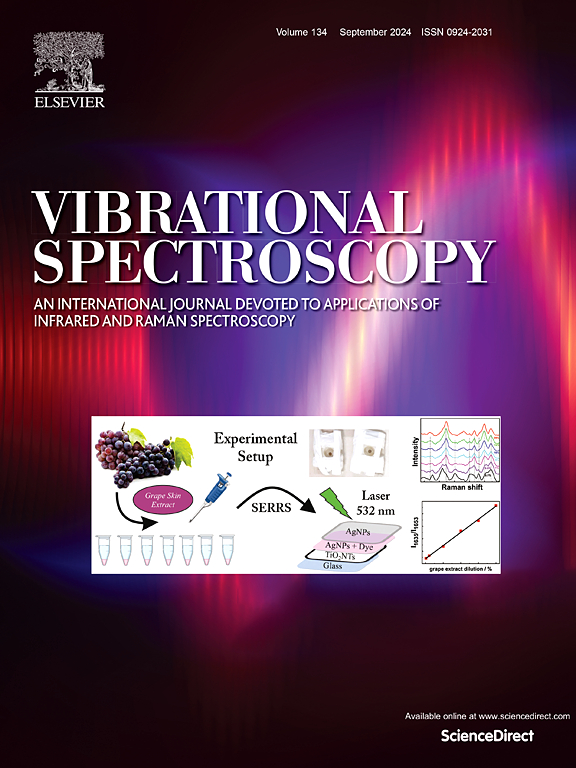揭示两性离子甘氨酸在水溶液中的振动模式
IF 3.1
3区 化学
Q2 CHEMISTRY, ANALYTICAL
引用次数: 0
摘要
振动光谱学广泛用于探测和表征化学、生物和生物医学样品。甘氨酸溶液与多种生物和化学系统有关,但作为水溶液中的优势种,甘氨酸两性离子的实验振动波数不一致且不完整。本研究提出了一个程序,获得了水溶液中甘氨酸两性离子的一整套振动频率,除了两个最低波数模式,这两个模式是从以前的太赫兹研究中获得的。利用红外光谱和拉曼光谱测量振动光谱,获得不同甘氨酸溶液浓度范围内使用四种不同仪器的红外和拉曼活性模式。利用对隐式和显式水的密度泛函理论计算的文献调查的见解,将实验光谱的反褶积引导到振动模式,给出24个振动波数中的22个,标准误差小于3 cm−1。对甘氨酸振动谱的深入分析使文献中缺失和错误的波数得以识别,并且确定振动模式的系统程序将为甘氨酸系统的更深入定量分析铺平道路,并作为计算方法开发的基准。本文章由计算机程序翻译,如有差异,请以英文原文为准。
Uncovering the vibrational modes of zwitterion glycine in aqueous solution
Vibrational spectroscopy is widely employed to probe and characterise chemical, biological and biomedical samples. Glycine solutions are relevant in a variety of biological and chemical systems, yet the reported experimental vibrational wavenumbers of the glycine zwitterion, which is the dominant species in aqueous solution, are inconsistent and incomplete. This study presents a procedure that obtained a complete set of vibrational frequencies for the glycine zwitterion in aqueous solution, apart from the two lowest wavenumber modes which are available from a previous THz study. Vibrational spectra were measured using IR and Raman spectroscopy, to obtain both IR and Raman-active modes for a range of different glycine solution concentrations using four different instruments. Insight from a literature survey of density functional theory calculations in implicit and explicit water was used to guide the deconvolution of the experimental spectra into vibrational modes, giving 22 out of 24 vibrational wavenumbers with a standard error of less than 3 cm−1. This thorough analysis of the glycine vibrational spectra has enabled missing and erroneous wavenumbers in literature to be identified, and the systematic procedure for determining vibrational modes will pave the way for deeper quantitative analysis of glycine systems, and serve as a benchmark for computational method development.
求助全文
通过发布文献求助,成功后即可免费获取论文全文。
去求助
来源期刊

Vibrational Spectroscopy
化学-分析化学
CiteScore
4.70
自引率
4.00%
发文量
103
审稿时长
52 days
期刊介绍:
Vibrational Spectroscopy provides a vehicle for the publication of original research that focuses on vibrational spectroscopy. This covers infrared, near-infrared and Raman spectroscopies and publishes papers dealing with developments in applications, theory, techniques and instrumentation.
The topics covered by the journal include:
Sampling techniques,
Vibrational spectroscopy coupled with separation techniques,
Instrumentation (Fourier transform, conventional and laser based),
Data manipulation,
Spectra-structure correlation and group frequencies.
The application areas covered include:
Analytical chemistry,
Bio-organic and bio-inorganic chemistry,
Organic chemistry,
Inorganic chemistry,
Catalysis,
Environmental science,
Industrial chemistry,
Materials science,
Physical chemistry,
Polymer science,
Process control,
Specialized problem solving.
 求助内容:
求助内容: 应助结果提醒方式:
应助结果提醒方式:


